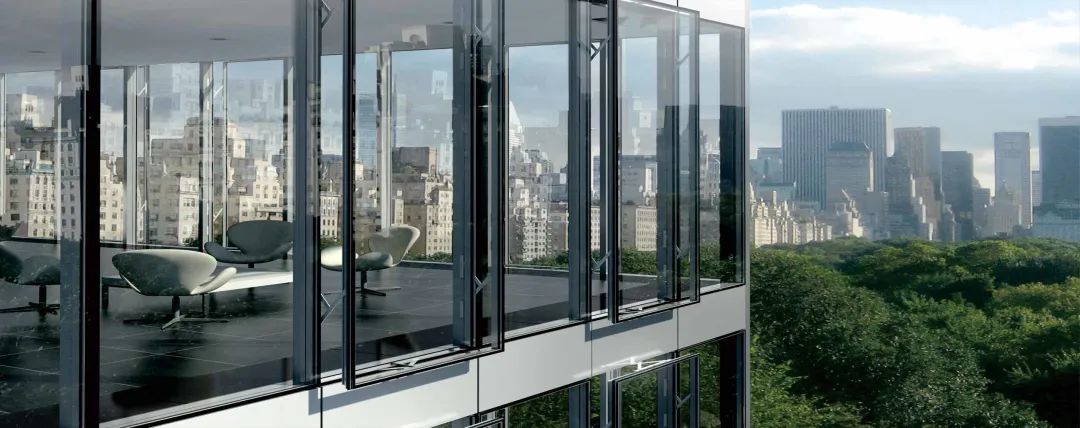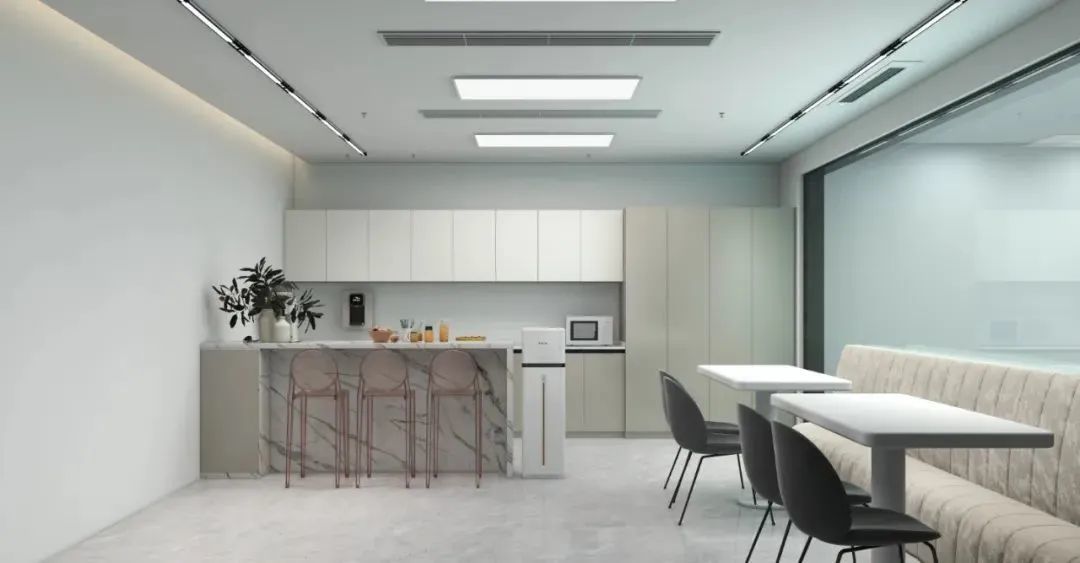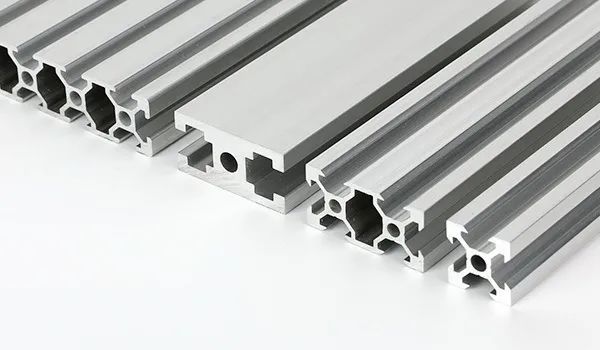Kemet Share | Talking about the Application and Research and Development of Passive Windows
Release time:
2021-12-24
Abstract: On September 22, 2020, President Xi Jinping announced during the general debate of the United Nations that China's carbon dioxide emissions will peak by 2030 and achieve carbon neutrality by 2060. How to fulfill the promise as scheduled, implement the transformation of national energy utilization, actively promote the development of low-carbon society, and develop green buildings and zero energy consumption buildings. As an important way to achieve the goal of carbon peak and carbon neutral task. The development of zero-energy buildings cannot avoid the application of passive doors and windows.
Abstract: On September 22, 2020, President Xi Jinping announced during the general debate of the United Nations that China's carbon dioxide emissions will reach a peak by 2030 and achieve carbon neutrality by 2060. How to fulfill the promise as scheduled, implement the transformation of national energy utilization, actively promote the development of low-carbon society, and develop green buildings and zero energy consumption buildings. As an important way to achieve the goal of carbon peak and carbon neutral task. The development of zero-energy buildings cannot avoid the application of passive doors and windows.
1. Background
On September 22, 2020, President Xi Jinping announced during the general debate of the United Nations that China's carbon dioxide emissions will reach a peak by 2030 and achieve carbon neutrality by 2060.
On December 12, 2020, President Xi Jinping further proposed a new measure of China's national independent contribution at the Climate Summit, that is, by 2030, carbon dioxide emissions per unit of GDP will drop by more than 65% compared with 2005, non-fossil energy resources will account for about 25% of primary energy consumption, forest stock will increase by 6 billion cubic meters compared with 2005, and wind and solar power generation will reach more than 1.2 billion kilowatts.
carbon peak refers to the carbon emissions of the world, countries, cities, enterprises and other entities in the process of rising and falling, the highest point of carbon emissions is the carbon peak. Carbon neutrality refers to the balance between man-made emissions and man-made sinks through afforestation, carbon capture and storage (CCS) technologies, etc., in the narrow sense of carbon dioxide emissions, and in the broad sense of all greenhouse gas emissions.
How can we fulfill our promises as scheduled, implement the national energy utilization transformation, actively promote the development of a low-carbon society, and develop green buildings and zero-energy buildings. As an important way to achieve the goal of carbon peak and carbon neutral task. The development of zero-energy buildings cannot avoid the application of passive doors and windows.
Application of 2. Passive Doors and Windows in Architecture
2.1 What are Passive Doors and Windows
As a space unit, doors and windows are one of the essential basic elements of buildings. They contrast the image and style of buildings and record and show the artistic tendency of architecture from form to function. Passive doors and windows are designed with equal lines and various opening methods through facades, make the building more have a strong visual impact, fully show the building smooth and elegant feeling.
Energy-saving doors and windows designed based on passive design. Passive doors and windows are not an energy consumption standard, but a system door and window solution that takes into account efficiency, architectural appearance and good comfort. The "passive design" applies the natural principles of sunlight, wind, temperature and humidity in nature, and tries not to rely on the consumption of conventional energy, the living environment is improved and created by the architectural methods of planning, design and environmental configuration; there is basically no need to install additional heating and cooling equipment.
2.2 passive doors and windows classification:
passive doors and windows according to the material can be divided into steel doors and windows, wood doors and windows, aluminum alloy doors and windows, this article mainly discusses aluminum alloy doors and windows.
2.3 Passive Doors and Windows Features:
According to the research results of the German Passive House Institute PHI, the windows of passive houses must meet the following requirements.
Three-layer low energy consumption or equivalent glass, high thermal insulation performance warm edge, high thermal insulation window frame, wall in the optimized installation method. At present, most of the masonry concrete solid walls in China are hung and fixed on the outside of the wall opening according to the requirements of passive buildings. These conditions are perfectly matched to reduce the heat loss of passive doors and windows by 50% compared to modern standard glass. These reduced heat losses keep the indoor temperature comfortable even on cold winter nights.
1. Basic performance requirements for transparent part of external window: The performance of transparent part of
glass is the most complicated, and the following requirements shall be met at the same time:
1) The heat transfer coefficient of glass shall meet K≤ 0.8W/(m2 K).
2) The total solar energy transmittance of glass G ≥ 0.
3) The selectivity coefficient S of glass, the larger the better. and satisfy the requirement of S = TL/g≥ 1.25; where TL is the visible light transmittance.
Research and development of 3. passive windows
4. Passive Window New Material Application Outlook
With the development of science and technology, new materials, new processes, new technologies continue to emerge, and new solutions are emerging in the research and development of passive windows.
1. New type of glass Vacuum glass
Vacuum glass is empty glass is a new type of glass deep-processing product, which is developed based on the principle of thermos. The structure of vacuum glass is similar to that of hollow glass, except that the gas in the vacuum glass cavity is very thin and almost close to vacuum. The thermal insulation performance of vacuum glass is based on the principle of vacuum thermos. The thermal insulation effect of tempered vacuum glass V glass products is more than 1 meter thick brick wall, which is 4 to 6 times that of ordinary insulating glass, and the U value (also called heat transfer coefficient or K value) is as low as 0.4W/m2 · K (European IFT laboratory report). If vacuum glass is used to make passive windows, it can not only reduce the weight of the glass, but also save resources.
2. Aerogel material
1) The fine nano-network structure of silicon aerogel effectively limits the propagation of local thermal excitation, and its solid-state thermal conductivity is 2-3 lower than that of the corresponding glassy material Order of magnitude. The contribution of gas molecules to heat conduction is suppressed by nano-microvoids. The refractive index of silica aerogel is close to l, and the ratio of the annihilation coefficient of infrared and visible light is more than 100. It can effectively pass through the sunlight and prevent the infrared heat radiation of the ambient temperature. It has become an ideal transparent heat insulation material. It has been applied in solar energy utilization and building energy saving.
By means of doping, can further reduce the radiation heat conduction of silicone aerogel, the thermal conductivity of carbon-doped aerogel at room temperature and pressure can be as low as 0.013 w/m-K, is the lowest thermal conductivity of solid materials, is expected to replace polyurethane foam as a new refrigerator insulation material. The incorporation of titanium dioxide can make silicon aerogel a new type of high-temperature insulation material, and the thermal conductivity at 800K is only 0.03 w/m · K, which will be further developed as a new material for military products.
2) Li Zhiqiang and others of Shanghai Jiaotong University prepared 0.1%(mass fraction) graphene/aluminum compliance material by hot extrusion method, and its tensile strength was basically increased by 62% compared with pure aluminum, reaching 249MPa. At the same time, their further research shows that adding 3% (mass fraction) of graphene can increase the elastic modulus by 18%. With the progress and development of science and technology and government policy intervention, near zero energy consumption buildings, passive doors and windows will be more and more widely used, and with the application of new materials, the performance of passive doors and windows will be better.
Contact Information
Customer Service Tel: +86-539-7177878
Mailbox: kemet@sdkemet.com
Zip Code: 273400
Address: Linyi City, Shandong Province
Copyright©2023 Kemet New Materials Technology Co., Ltd. All Rights Reserved





